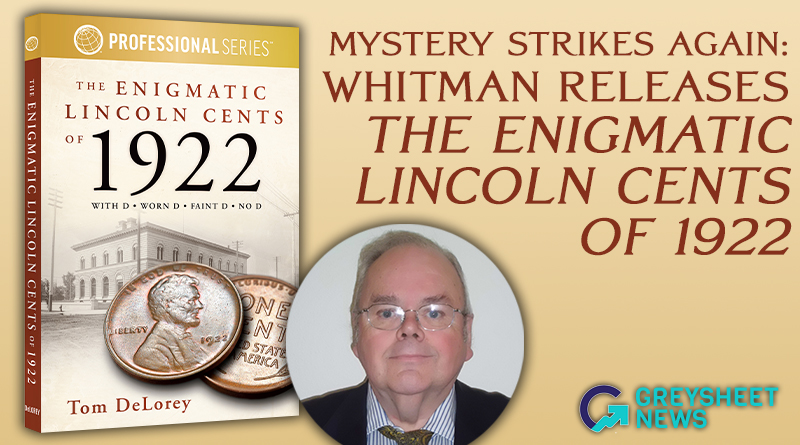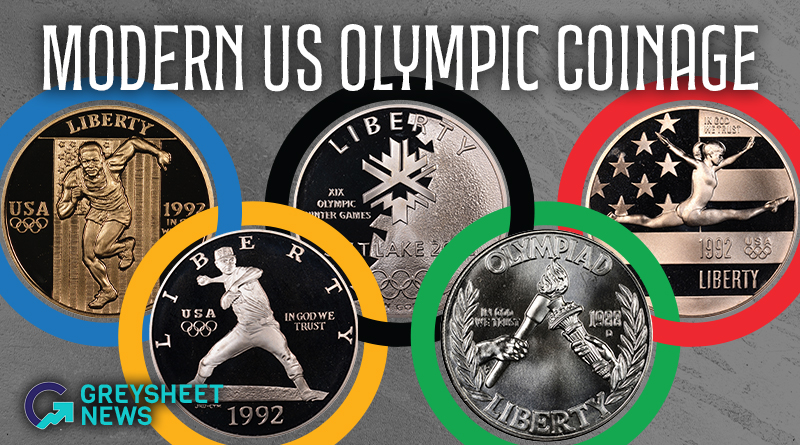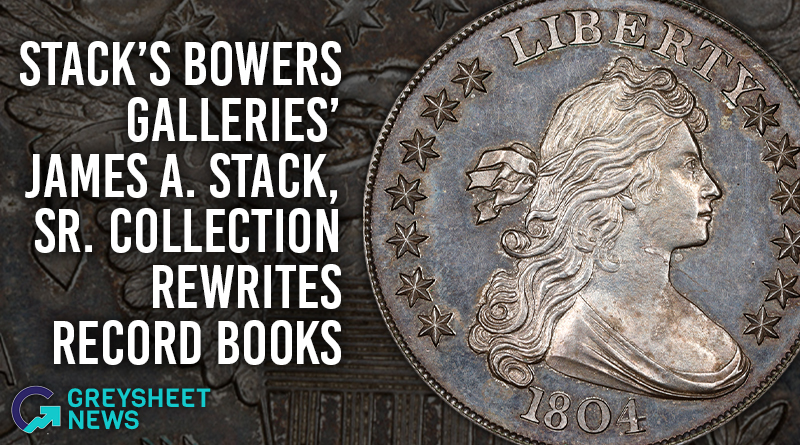Greysheet & CPG® PRICE GUIDE
- U.S. Coins /
- Pattern Coinage /
-
Patterns (1853) Values
About This Series
History and Overview
The Mint continued producing a new format of one-cent piece to replace the cumbersome copper “large” cents that had been the standard for many years. To test various metal concepts, an existing quarter eagle die of 1853 was employed in combination with a possibly newly created reverse die, the latter featuring an open wreath enclosing the words ONE CENT, spaced too widely apart with an open space at the center, and obviously made in haste.7 Pieces were struck in various alloys, generally known as “German silver,” this being a term for an alloy of silvery color, with nickel, copper, and other metals, but lacking precious silver. J-149 was struck with a content of 40% nickel, 40% copper, and 20% zinc; J-150 was made of 30% nickel, 60% copper, and 10% zinc; and J-151 was struck in 40% nickel, 60% copper. Apparently, some were made in “60% nickel, the remainder copper.”8 Elemental analysis of the cent patterns of this year suggests that at best the stated metal percentages were approximate.
For collectors, mules were created by combining the obverse of the 1850 perforated cent die (J-119) with the reverse of the 1853 (J-149).9 These are now listed under 1850, as J-124a to J-124e.
A curious pattern trime or three-cent piece was described by W. Elliot Woodward in his catalog of the Joseph J. Mickley Collection (sold from October 28 to November 2, 1867). The location of this piece is not known today.
Also listed under patterns of 1853 are copper impressions from Proof dies of the Liberty Seated dollar dated 1853. These have an interesting background inasmuch as years later it seems to have been realized by collectors that no original Proof impressions were struck in 1853. To fill sets, the Mint produced restrikes from Proof dies, 12 said to have been made in silver and an unknown number in copper. The copper pieces are listed here as J-154.
Collecting Perspective
The German-silver-pattern cents of 1853 seem to have been made in fairly large quantities and can be obtained readily today. The surfaces, not mirrorlike, are properly described as being Mint State. Although J-149 through J-153 were made in different metal compositions, in the absence of elemental analysis, these are impossible to determine today. Accordingly, certain attributions in past market offerings have been speculative. The varieties under J-152 in the seventh edition of Judd, made from an 1850-dated die, were produced for collectors and might best be collected along with other pieces bearing the 1850 date. They have been reassigned to that year’s section under the numbers J-124a to J-124e.
Catalog Detail
Legal Disclaimer
The prices listed in our database are intended to be used as an indication only. Users are strongly encouraged to seek multiple sources of pricing before making a final determination of value. CDN Publishing is not responsible for typographical or database-related errors. Your use of this site indicates full acceptance of these terms.

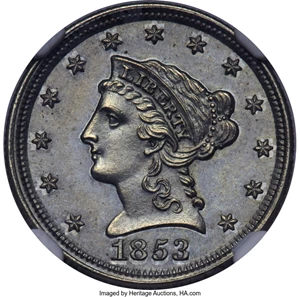















| Patterns (1853) | Value Range | Favorite | |||
|---|---|---|---|---|---|
| Patterns (1853) | Value Range | ||||
|
$3,750
-
$7,500
$3,750 - $7,500
|
||||
|
$900
-
$7,000
$900 - $7,000
|
||||
|
$3,500
-
$7,250
$3,500 - $7,250
|
||||
|
$1,100
-
$6,250
$1,100 - $6,250
|
||||
|
-
|
||||
|
$4,500
-
$7,250
$4,500 - $7,250
|
||||
|
-
|
||||
|
-
|
||||
|
$12,500
-
$20,000
$12,500 - $20,000
|
||||
|
$14,500
-
$23,000
$14,500 - $23,000
|
||||
|
-
|
||||
From the Greysheet Marketplace
Buy Now: $125,000.00
Buy Now: $2,890.63
Buy Now: $6,891.25
Auction Ends: 12/15/2025
Buy Now: $37,000.00
Buy Now: $5,500.00
Buy Now: $4,950.00
Buy Now: $3,695.00
Buy Now: $120,000.00
Buy Now: $31,500.00
Related Stories (powered by Greysheet News)
View all news
Greysheet Catalog Details
History and Overview
The Mint continued producing a new format of one-cent piece to replace the cumbersome copper “large” cents that had been the standard for many years. To test various metal concepts, an existing quarter eagle die of 1853 was employed in combination with a possibly newly created reverse die, the latter featuring an open wreath enclosing the words ONE CENT, spaced too widely apart with an open space at the center, and obviously made in haste.7 Pieces were struck in various alloys, generally known as “German silver,” this being a term for an alloy of silvery color, with nickel, copper, and other metals, but lacking precious silver. J-149 was struck with a content of 40% nickel, 40% copper, and 20% zinc; J-150 was made of 30% nickel, 60% copper, and 10% zinc; and J-151 was struck in 40% nickel, 60% copper. Apparently, some were made in “60% nickel, the remainder copper.”8 Elemental analysis of the cent patterns of this year suggests that at best the stated metal percentages were approximate.
For collectors, mules were created by combining the obverse of the 1850 perforated cent die (J-119) with the reverse of the 1853 (J-149).9 These are now listed under 1850, as J-124a to J-124e.
A curious pattern trime or three-cent piece was described by W. Elliot Woodward in his catalog of the Joseph J. Mickley Collection (sold from October 28 to November 2, 1867). The location of this piece is not known today.
Also listed under patterns of 1853 are copper impressions from Proof dies of the Liberty Seated dollar dated 1853. These have an interesting background inasmuch as years later it seems to have been realized by collectors that no original Proof impressions were struck in 1853. To fill sets, the Mint produced restrikes from Proof dies, 12 said to have been made in silver and an unknown number in copper. The copper pieces are listed here as J-154.
Collecting Perspective
The German-silver-pattern cents of 1853 seem to have been made in fairly large quantities and can be obtained readily today. The surfaces, not mirrorlike, are properly described as being Mint State. Although J-149 through J-153 were made in different metal compositions, in the absence of elemental analysis, these are impossible to determine today. Accordingly, certain attributions in past market offerings have been speculative. The varieties under J-152 in the seventh edition of Judd, made from an 1850-dated die, were produced for collectors and might best be collected along with other pieces bearing the 1850 date. They have been reassigned to that year’s section under the numbers J-124a to J-124e.
Catalog Detail
Legal Disclaimer
The prices listed in our database are intended to be used as an indication only. Users are strongly encouraged to seek multiple sources of pricing before making a final determination of value. CDN Publishing is not responsible for typographical or database-related errors. Your use of this site indicates full acceptance of these terms.







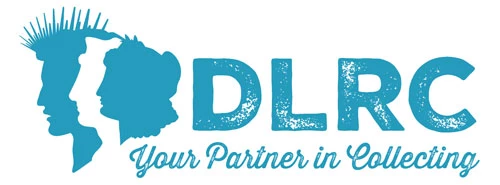


 Loading more ...
Loading more ...









